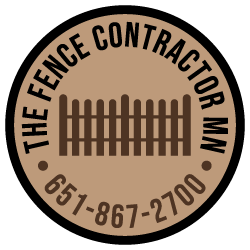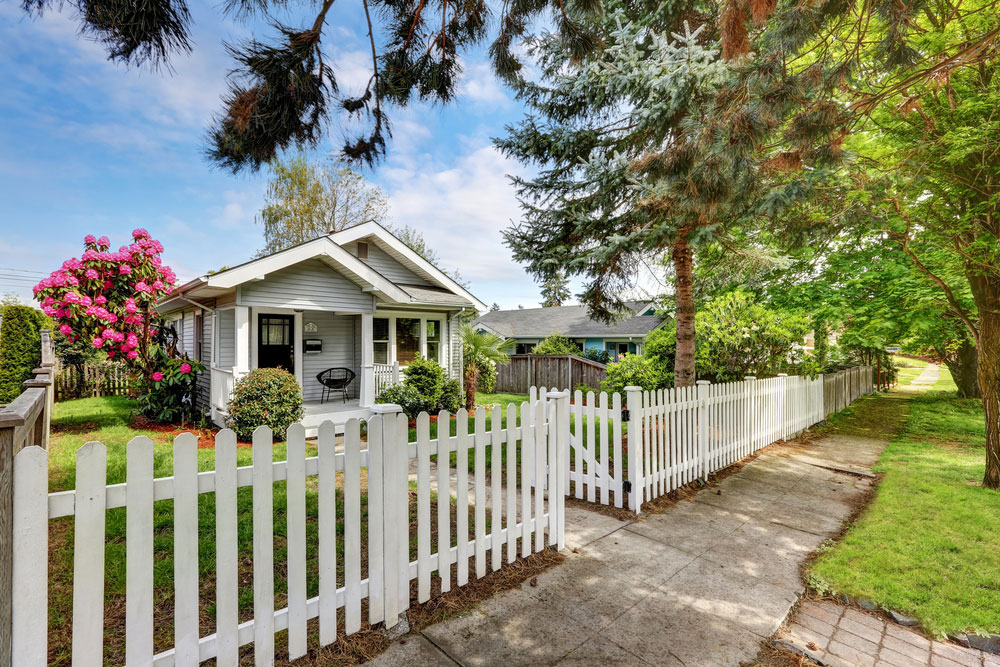Weather can take a serious toll on your fence’s durability, often in ways you might not expect.
Excessive rain and moisture can lead to wood warping or metal rusting, while extreme temperatures may cause cracking or bending.
Strong winds can also loosen or damage panels, compromising your fence’s stability.
Recognizing these risks is essential for keeping your fence in top condition. So, what steps can you take to protect it from the elements?
The Effects of Rain and Moisture on Fencing Materials
Rain and moisture can have a lasting impact on your fence, causing damage that affects both its strength and appearance.
Understanding how different materials respond to moisture helps you take steps to protect your investment.
Impact on Different Fence Materials
Various fencing materials react differently to prolonged exposure to moisture.
- Wood Fences: Absorb water easily, leading to warping, cracking, or rot.
- Metal Fences: Prone to rust and corrosion, which weakens their structure.
- Vinyl Fences: While more moisture-resistant, trapped water in seams can cause damage.
Signs of Moisture Damage
Regular inspections can help identify moisture problems early.
- Look for discoloration, swelling, or soft spots in wooden fences.
- Check metal fences for rust spots, especially near joints or hardware.
- Inspect vinyl fences for algae buildup or trapped moisture in corners.
Preventive Measures for Fence Protection
Taking proactive steps can reduce moisture-related damage.
- Apply waterproof sealants to wooden fences.
- Treat metal fences with rust-resistant coatings.
- Clean vinyl fences regularly to prevent buildup and mold.
By understanding how rain and moisture affect your fence and implementing protective measures, you can extend its lifespan and maintain its visual appeal.
How Temperature Extremes Contribute to Fence Deterioration
Extreme weather conditions can significantly impact your fence’s durability, causing materials to weaken and deteriorate faster.
Understanding these effects can help you take proactive steps to protect your fence.
Heat Damage on Fences
Scorching temperatures can cause several issues, particularly for wooden and vinyl fences.
- Wood Fences: Prolonged sun exposure can dry out wood, leading to cracks, splinters, and fading.
- Vinyl Fences: High heat may cause warping or bending, especially if the fence isn’t reinforced.
Cold Weather Damage on Fences
Freezing temperatures can also weaken your fence’s structure.
- Wood Fences: Cold air can make wood brittle, increasing the risk of breakage.
- Metal Fences: Freezing conditions combined with moisture may accelerate rust formation.
Preventing Temperature-Related Damage
Taking preventive measures can reduce the impact of extreme weather.
- Apply weatherproof sealants to wooden fences to lock in moisture and prevent drying.
- Use UV-resistant coatings on vinyl fences to reduce warping.
- Treat metal fences with rust-inhibiting paint for added protection.
By staying proactive with maintenance and addressing temperature-related damage early, you can extend the life of your fence and maintain its strength year-round.
The Impact of Wind and Storms on Fence Stability
Wind and storms can pose serious threats to your fence’s strength and durability. Understanding how these elements affect your fence can help you take steps to prevent costly damage.
Wind Damage on Fences
High winds can put significant strain on your fence, especially if it’s older or weakened.
- Wood Fences: Loose panels or weakened posts are more likely to snap or collapse.
- Vinyl Fences: Sections may bend or become dislodged under pressure.
- Metal Fences: Strong gusts can shake and loosen fence posts.
Storm Damage and Soil Erosion
Storms often cause soil to shift, weakening your fence’s foundation.
- Heavy rain can wash away soil around fence posts, reducing stability.
- Flooding may saturate wood, making it prone to rot and weakening the structure.
Preventing Storm-Related Damage
Taking preventive action can protect your fence from severe weather.
- Reinforce loose panels and tighten hardware before storm season.
- Ensure fence posts are set in concrete to improve stability.
- Trim nearby branches to prevent falling debris from damaging your fence.
By inspecting your fence regularly and making timely repairs, you can minimize the risk of weather-related damage and maintain a strong, secure boundary for your property.
By understanding how weather conditions impact your fence and taking proactive steps to protect it, you can reduce the risk of costly repairs and extend its lifespan.
Regular maintenance, timely repairs, and protective treatments will help your fence withstand rain, extreme temperatures, and strong winds.
Investing in these preventive measures ensures your fence remains secure, stable, and visually appealing throughout the changing seasons.
With proper care, your fence can continue to enhance your property’s safety and curb appeal for years to come.

